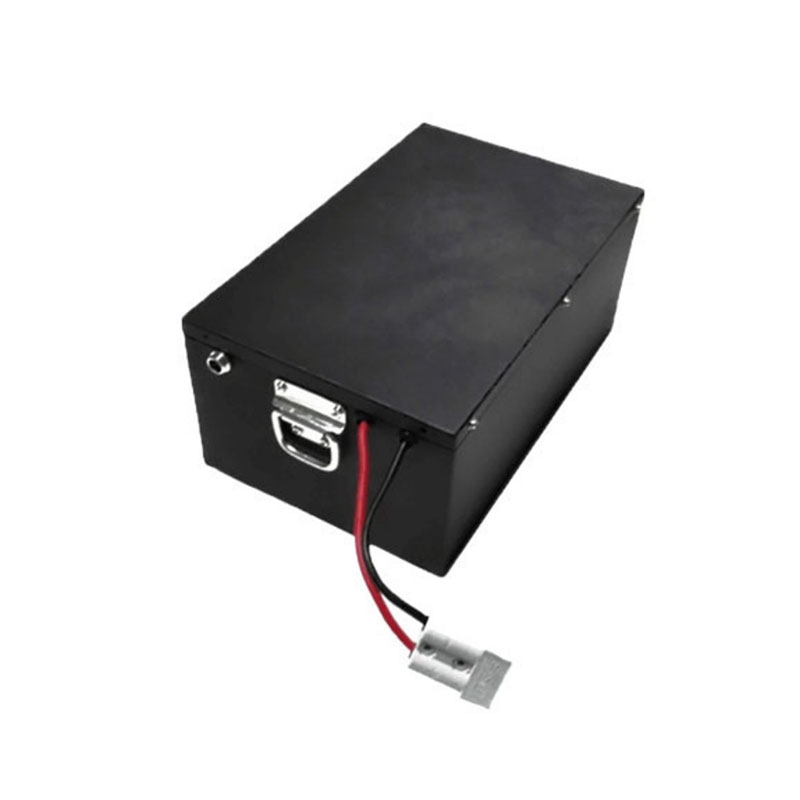Detailed description of AGV Lithium Battery
2024-06-29
An AGV (Automated Guided Vehicle) lithium battery is a specialized power source designed for use in automated guided vehicles, which are robotic systems used for material handling and transportation in industrial and commercial settings. Here’s a detailed description of what typically characterizes an AGV lithium battery:
1. Battery Chemistry:
- Lithium-Ion (Li-ion): AGV lithium batteries predominantly use lithium-ion technology due to its high energy density, long cycle life, and lightweight properties.
- Variants: Depending on the specific requirements, variations such as lithium iron phosphate (LiFePO4) may also be used, known for their safety and stability under harsh conditions.
2. Design and Configuration:
- Module Configuration: Structured in modules or packs, typically arranged to meet voltage and capacity specifications required by the AGV system.
- Customization: Configurations can be customized based on the AGV's power requirements, size constraints, and operational demands.
- Integration: Designed to integrate seamlessly into the AGV chassis or battery compartment, ensuring compatibility and efficient use of space within the vehicle.
3. Performance Characteristics:
- Energy Density: Offers high energy density per unit weight and volume, maximizing the AGV's operational range and payload capacity without significantly increasing size or weight.
- Power Output: Provides sufficient power output to drive electric motors and other onboard systems, facilitating smooth and efficient operation of the AGV.
- Fast Charging Capability: Many AGV lithium batteries support fast charging technologies, enabling quick turnaround times during operational shifts and minimizing downtime.
- Cycle Life: Designed for a long cycle life, with thousands of charge-discharge cycles, ensuring durability and cost-effectiveness over the lifespan of the AGV.
4. Safety and Reliability:
- Battery Management System (BMS): Includes an integrated BMS to monitor cell voltage, temperature, and current flow, ensuring safe operation and preventing overcharging or overheating.
- Thermal Management: Incorporates thermal management systems such as cooling fans or heat sinks to regulate battery temperature and optimize performance, particularly during high-demand operations.
- Safety Standards: Manufactured in compliance with industry standards and regulations for battery safety, reliability, and environmental sustainability.
5. Environmental Considerations:
- Environmental Impact: Lithium batteries are generally considered more environmentally friendly than traditional lead-acid batteries due to their higher efficiency and recyclability.
- Emission Reduction: Contributes to reducing greenhouse gas emissions and improving overall energy efficiency in industrial operations where AGVs replace conventional fuel-powered vehicles.
6. Integration with AGV Systems:
- Compatibility: Engineered to interface seamlessly with AGV control systems, including communication protocols and power management interfaces.
- Operational Efficiency: Enhances the agility, responsiveness, and operational efficiency of AGV fleets by providing consistent and reliable power supply for continuous operation.
7. Maintenance and Serviceability:
- Routine Maintenance: Requires periodic maintenance checks and battery health assessments to ensure optimal performance and longevity.
- Service Life: Designed to withstand the rigors of industrial use and provide dependable performance over extended periods with minimal maintenance requirements.
AGV lithium batteries play a critical role in enhancing the efficiency, reliability, and sustainability of automated guided vehicle systems, supporting a wide range of applications in manufacturing, logistics, warehousing, and distribution facilities worldwide. Their advanced features and capabilities contribute to the evolution of automated material handling technologies, driving productivity and operational excellence in modern industrial environments.



